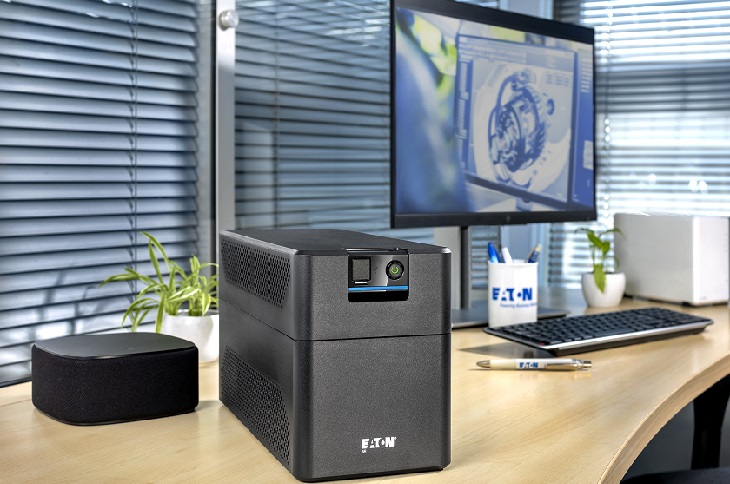Kenya’s digital age has seen remarkable growth and transformation in recent years. The country has emerged as a leader in digital innovation in Africa, driven by widespread mobile connectivity and a robust tech ecosystem. We have seen remote work, online learning, and digital entertainment becoming integral parts of our daily lives and the need for a reliable power source has never been more critical.
Imagine working on a critical project, engaging in an intense online gaming session, or enjoying a movie night, only to be abruptly interrupted by a power outage. This is where an Uninterruptible Power Supply (UPS) system comes into play, safeguarding your electronic devices from power surges and outages. But how do you select the right UPS for your needs? Here are nine essential tips from an expert to guide you on this crucial journey.
- Identify the Devices You Need to Protect
First, take stock of the devices you want to shield from power disruptions. Whether it’s your PC, router, gaming console, home cinema system, or security setup, a UPS can provide that vital layer of protection. Remember, even a brief power surge can cause significant damage to sensitive electronics. A UPS ensures your devices remain operational during short outages, preventing data loss and safeguarding your work.
Helpful Hint: Avoid connecting laser printers directly to a UPS. They can cause frequent battery transfers, depleting the battery prematurely. Use surge-only outlets for such devices.
- Consider the Level of Protection You Need
Different UPS topologies offer varying degrees of protection. Standby or off-line UPS systems provide basic surge protection and switch to battery mode during power failures, ideal for less sensitive equipment like LED monitors and modems. Line-interactive UPS systems, which regulate voltage by boosting or decreasing it as needed, are suitable for high-end PCs and other sensitive electronics, especially in areas with unstable power supplies or frequent storms.
- Understand the Power Requirements
Grasping the relationship between watts and volt-amperes (VA) is crucial. Most home and office UPS systems range between 450 and 2200 VA. To avoid overloading during an outage, ensure your UPS supports the maximum wattage of all connected devices. Ideally, choose a UPS with an output capacity 20% higher than your estimated power requirements.
Helpful Tip: Never load a UPS beyond 80% of its capacity. This allows a buffer for peak conditions and accounts for normal battery degradation over time.
- Check the Number of Outlet Receptacles
Ensure your UPS has enough output sockets for all your equipment. For instance, the 3S Gen2 UPS offers 6 to 8 output sockets, half with surge and battery protection and half with surge protection only. Some models even include extra USB ports for charging mobile devices during power outages.
Helpful Hint: Avoid connecting multiple devices to a UPS power strip, as this could overload the UPS.
- Consider Your Noise Tolerance Level
UPS systems can be noisy, especially those designed for server rooms or industrial environments. If you need a quiet space for work or meetings, check the UPS’s noise specifications. Models like the 3S Gen2 and Ellipse ECO are known for their quiet operation. The fan-less 5E Gen2 UPS up to 1200VA is another great option for silent performance.
- Think About Installation
UPS systems need space for proper heat dissipation, so avoid installing them in confined areas. If space is a concern, consider slim designs like the Ellipse ECO, which fits into small spaces and can be used as a tower or desktop monitor stand.
Helpful Tip: High temperatures can significantly reduce battery lifespan, so ensure your UPS has adequate ventilation.
- Quick Access to UPS Status
For immediate access to critical information, opt for a UPS with an LCD interface. These displays provide essential data on the UPS’s operation, including battery runtime and outage tracking. Models like Eaton’s Ellipse PRO UPS also allow you to configure parameters such as output voltage and alarm settings.
- Understand the Warranty
When comparing UPS models, review the warranty details. Check the duration, coverage, and whether it includes both the UPS and its batteries. Are the batteries user-replaceable? Eaton products, for example, come with a comprehensive warranty covering both the unit and batteries, along with extended plans for standard replacements, repairs, and professional support.
- Enhance Protection with Software
A UPS provides backup power during outages, but if electricity isn’t restored before the battery depletes, it can’t offer further protection. Pairing a UPS with software like Eaton’s UPS Companion can prevent data loss by allowing easy configuration of shutdown parameters and access to UPS settings.
By following these nine essential tips, you can choose the perfect UPS to keep your home or small office running smoothly. Investing in a reliable UPS not only protects your valuable devices but also ensures peace of mind in an increasingly digital world prone to power disruptions.
Related Content: Eaton Introduces The 5E Gen 2 UPS In Kenya To Counter Power Outage
By Parag Mendiratta, the Regional Manager, Eastern Africa at Eaton Electrical Sector.









